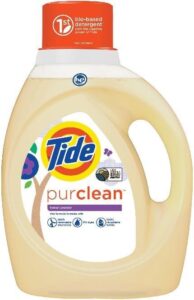The American Consumer Will Buy Your Renewably Powered Product If Only You’ll Tell Them More About It
America’s leading companies have always understood the need to invest in their brands.
What’s becoming a more mainstream notion now is that any shrewd brand investment would do well to articulate a commitment to environmental stewardship.
Consumers are primed to reward companies for making proactive, public commitments to both overarching sustainability and related renewable energy initiatives, according to newly released data from Shelton Group.
The findings indicate that while a clear majority of Americans care significantly about the environment, they aren’t necessarily willing to translate those concerns into lifestyle changes they deem inconvenient or uncomfortable. Put simply: What they are willing to do is adjust their buying habits to align with their professed values.
- 88 percent of Americans believe the average person should be taking concrete steps to reduce his or her environmental impact, and
- 78 percent of Americans feel some sense of personal responsibility to change daily purchase habits and practices to positively impact the environment.
But:
- Nearly two-thirds of Americans say they most often choose personal comfort or convenience over the environment.
That’s where brands come in.
- Nearly 60 percent of millennials look to companies to solve social and environmental problems they feel they can’t address – or would rather not have to.
- Approximately two-thirds of Americans say a company’s environmental reputation impacts their purchase.
- 60 percent of Americans say corporate social responsibility activities positively impact their purchase decision.
- Nearly one-fifth of Americans can now name a brand they’ve purchased – or not purchased – because of the environmental record of the manufacturer, a number that has risen dramatically over the last two years.
Renewable Energy: A Winning Narrative
The above data builds on a long track record of research suggesting that companies on the forefront of sustainability are inherently making a smart investment in their brands to attract customer preference and/or loyalty.
Of course, consumers can’t act on these partialities if they remain in the dark about corporations’ sustainability efforts, such as efforts to power operations from emissions-free renewable energy in the form of wind and solar power – which is quickly becoming a central plank of any sound corporate sustainability strategy.
Yes, corporate renewable energy purchasing is having a moment. Today, more than 50 companies across numerous industries sectors have signed up for renewable energy purchase agreements in the past five years – an incredible figure considering that just a decade ago it was only four companies: Apple, Google, SC Johnson and Walmart. In 2017 alone, corporate renewable energy deals equaled nearly 2.8 gigawatts of renewable power, roughly equal to the capacity of all power plants in Iceland!
All the progress on corporate renewable power purchasing suggests we may be reaching a turning point for something that was primarily limited to technical and financial discussions in the B2B world toward a broader conversation in the consumer marketing arena – a point where “powered by renewable energy” is seen as the badge of honor that every brand must have in its toolkit.
The fact is, even for the Americans who aren’t keenly aware of a company’s sustainability efforts, renewable energy tests very well. And broadly, “use renewable energy” is the second most important action Americans think companies should take to demonstrate their commitment to the environment.
Americans want to see more renewable power, regardless of where they live or their political persuasion. Refreshingly, a recent Pew study found that “robust support for expanding solar and wind power represents a rare point of bipartisan consensus in how Americans view energy policies.” More specifically, 89 percent of U.S. adults favor more solar panel farms and 85 percent favor more wind turbine farms – roughly double the preference for any other form of energy development.
As two veteran practitioners in sustainability communications and brand marketing, we know firsthand that despite our progress in building consumer awareness and preference, green initiatives can still be viewed negatively by some Americans, seen as esoteric, costly, partisan or just plain dull.
Now, what is beginning to be widely understood among top brand marketers is that renewable energy offers a stronger value proposition among consumers when compared to other planks of a company’s sustainability strategy. But it doesn’t take an expert to surmise – who wouldn’t want to attach their brand to any issue with an approval rating is in the high 80s?
Household Brands Go Renewable
Given the size of its marketing budget, anytime Anheuser-Busch InBev rolls out a major campaign it’s worth taking note. Given how precious space on brand packaging can be, it’s especially notable when a sustainability initiative makes its way on to the hero product.
This spring, Anheuser-Busch InBev started selling its flagship Budweiser with a new symbol on each iconic bottle highlighting that the beer was brewed using 100% renewable electricity. AB InBev’s bold move is part of larger initiative to encourage more companies to sign on to similar goals and adopt the new badge.

And to add a dash of viral marketing flair like only a brand like Budweiser can, the company commissioned a base jumper to leap off a wind turbine and unfurl the 100% symbol at its brewery in California.
AB InBev’s big foray into renewable energy marketing stands out for its ambition and reach, but its not the only new renewables campaign in the last year from other  leading corporations and their household brands.
leading corporations and their household brands.
In the fall, the world’s biggest chocolate maker, Mars, launched the “Fans of Wind” campaign through its M&M’s brand to spread the messages about its sustainable solutions to combat climate change. Connecting the dots between renewables and the greatest environmental challenge of all time in an approachable and easily understood manner, Mars deftly noted:
“People sure do love M&M’s®. That’s why we make a ton of ‘em. But we’re not just about making treats that everyone loves – we want to make them in a way that is sustainable and treats the planet better. Guess that’s what makes us such big fans of renewable wind energy.”
Not long before the Mars entered the game, the big dog in consumer brand marketing – Proctor & Gamble – launched a transformative new product under its Tide detergent label featuring prominent sustainability messaging on the bottle, which notes the plant-based formula is made with 100 percent renewable wind power electricity and is sold in a recyclable jug – thereby achieving a rare sustainability marketing trifecta.
All three of these big brand marketing campaigns are validating a trend to tell sustainability stories through the lens of renewable energy efforts, but we’re only scratching the surface in terms of brands that could be embracing the opportunity.
Consider the RE100 companies – a collaborative, global initiative uniting more than 100 influential businesses committed to 100 percent renewable electricity. Taken together, they aim to deploy more than 87 gigawatts of renewable energy worldwide over the next decade.
While all these companies should be applauded for their efforts, many consumer-facing brands with ambitious renewable energy goals have not made their way from the sustainability department to the marketing department.
Brands are missing out when they set ambitious environmental goals and leave it at that – you must let consumers know about it. When that happens, it’s easy for consumers to feel like they’re making a difference simply by making a purchase.
And when, in turn, those companies are rewarded by increased brand loyalty, more and more companies will incorporate clean power into their operations. Everybody wins.
Here in America, despite the current administration’s misguided attempts to return us to the expensive polluting power of the past, the renewable energy economy has arrived. And it’s only going to get bigger.
All consumers (not just millennials or the environmentally conscious) stand ready to reward brands for leading the charge toward a clean energy future.
The companies setting ambitious sustainability goals and implementing renewable energy purchase programs are reaping the operational benefits that come from such commitments – but the brands that can also translate this story through product marketing will be the biggest winners at the end of the day.
Just look at your beer, candy or laundry detergent a little closer if you don’t believe us.
Join leaders from across the renewable energy sector.

What will our next 20 years look like? Here’s the truth: they’ll be better with ACORE at the forefront of energy policy.
Shannon Kellogg
Amazon Web Services (AWS)

